Maa Siddhidatri, also known as Mata Siddhidatri or Devi Siddhidatri, is worshipped as the ninth and final form of Goddess Durga on the ninth day of Navratri (Mahanavami). Her name is derived from “Siddhi,” meaning supernatural powers or perfections, and “Datri,” meaning giver. Thus, Siddhidatri Mata is revered as the bestower of siddhis- divine accomplishments and spiritual powers that uplift both gods and devotees.
Seated gracefully on a lotus or riding a lion, Siddhidatri Devi holds a lotus, mace, conch shell, and discus in her four hands, symbolizing strength, purity, and divine authority. She is worshipped by devas, asuras, yakshas, gandharvas, and even Lord Shiva, who attained his mystical powers through her blessings. Her worship on the Navratri 9th day represents the culmination of the nine forms of Durga and the attainment of spiritual fulfilment.
Devotees believe that chanting the Siddhidatri Mantra, Beej Mantra, and Gayatri Mantra removes fears, dissolves ignorance, and grants both material prosperity and liberation. Observing the Maa Siddhidatri Puja Vidhi on the ninth Navratri day blesses devotees with perfection, peace, and the strength to overcome all obstacles in life.
Who is Siddhidatri Mata?
Siddhidatri Mata, also known as Maa Siddhidatri or Siddhidatri Devi, is the ninth Navratri goddess worshipped on the final day of Navratri, also called Mahanavami. Her name combines “Siddhi” (supernatural powers or perfections) and “Datri” (giver), making her the divine mother who bestows siddhis upon her devotees.
According to scriptures, Goddess Siddhidatri is considered the original form of Goddess Parvati and the ultimate cosmic power. She guided the Hindu trinity-Brahma, Vishnu, and Shiva- by blessing them with their divine consorts, who are manifestations of herself: Saraswati for Brahma, Lakshmi for Vishnu, and Parvati for Shiva. Even Lord Shiva attained mystical powers by worshipping her, which led to the creation of the Ardhanarishvara form, where Shiva and Siddhidatri Maa are united as one.
Maa Siddhidatri Story
The Maa Siddhidatri story explains that she is worshipped by gods, sages, demons, and humans alike because her blessings are universal and non-discriminatory. She is depicted seated on a lotus or riding a lion, dressed in divine attire, and adorned with flowers and ornaments. She carries a discus (chakra), a conch shell (shankh), a mace (gada), and a lotus, each representing spiritual authority, protection, clarity, and purity.
As the Navratri 9th day goddess, Siddhidatri Mata represents the completion of the Navadurga journey. Her blessings free devotees from ignorance, remove suffering, and grant both spiritual realization and worldly success. For this reason, she is also called the giver of all siddhis and is honoured as the 9th Navratri Mata name in the worship of Durga’s nine forms.
Significance of Goddess Siddhidatri
Devi Siddhidatri holds immense spiritual and philosophical importance as the ninth day of Navratri goddess. She represents the culmination of the Navadurga forms and embodies ultimate perfection, granting siddhis (supernatural powers) to gods, sages, and devotees.
Spiritual Importance
Maa Siddhidatri symbolizes the union of masculine and feminine energies. Through her blessings, Lord Shiva attained mystical powers and formed the Ardhanarishvara, a divine manifestation of half-Shiva and half-Siddhidatri Mata. This highlights that creation and harmony in the universe are possible only when both energies unite.
Her worship dissolves ignorance, removes obstacles, and empowers devotees with wisdom, clarity, and spiritual growth. By chanting the Siddhidatri mantra, devotees awaken their inner strength and receive guidance toward self-realization and liberation (moksha).
Importance During Navratri
The ninth day of Navratri (Mahanavami) is especially significant as it is dedicated to Mata Siddhidatri. Devotees observe fasting, perform puja rituals, chant the Navratri 9th day mantra, and worship young girls (Kanya Pujan) to honour the nine forms of the goddess. Temples in Varanasi, Chhattisgarh, and Madhya Pradesh become sacred centres for her worship during this time.
Her significance extends beyond rituals; she inspires discipline, resilience, and transformation in devotees. By worshipping Siddhidatri Mata on the 9th Navratri, devotees not only seek worldly accomplishments but also ultimate liberation.
Iconography & Symbolism of Siddhidatri Devi
Maa Siddhidatri, the ninth Navratri goddess, is often depicted seated gracefully on a fully bloomed lotus or riding a lion, symbolizing purity, strength, and courage. She is draped in a red saree, adorned with jewelry, and crowned with divine ornaments, radiating serenity and spiritual authority.
Attributes and Symbols
- Four Arms: In her four hands, Goddess Siddhidatri holds a discus (chakra), conch shell (shankh), mace (gada), and lotus.
The chakra represents clarity, discipline, and the power of the mind.
The shankh symbolizes the divine sound Om and spiritual awakening.
The gada (mace) stands for protection, strength, and the power to remove ignorance.
The lotus signifies purity, growth, and spiritual enlightenment.
- Lion Mount: Her vehicle, the lion, reflects courage and mastery over fear.
- Snake Garland: In some depictions, she wears a snake around her neck, symbolizing victory over obstacles.
- Colors: She is associated with purple and peacock green, colors symbolizing ambition, divine energy, and the end of ignorance.
Symbolism
The iconography of Devi Siddhidatri highlights her as the giver of all siddhis, guiding devotees beyond worldly illusions toward liberation. Her calm and composed expression, combined with her powerful attributes, conveys blessings, protection, and the promise of both material prosperity and spiritual fulfilment.
Her symbolism reinforces her role as Navratri 9th day goddess, where her presence marks the completion of spiritual growth, encouraging devotees to embrace wisdom, balance, and inner peace.
Origin of Siddhidatri Mata
The origin of Siddhidatri Mata traces back to the primordial void before creation, when darkness enveloped the cosmos and nothing existed. From this infinite emptiness emerged a radiant divine light, gradually taking the form of Mahashakti, the Supreme Goddess. From this source, Maa Siddhidatri manifested as the ultimate giver of siddhis, bestowing supernatural powers upon gods, sages, and devotees.
She brought forth the holy trinity of Brahma, Vishnu, and Shiva, assigning them their divine roles of creation, preservation, and destruction. Through her blessings, they received the knowledge and powers necessary to govern the universe. It is said that Devi Siddhidatri granted the eight siddhis, or mystical perfections, empowering them to restore balance whenever chaos or threats from demons arose.
The Eight Siddhis Bestowed by Siddhidatri Devi
- Anima – the power to shrink to the smallest size.
- Mahima – the ability to grow infinitely large.
- Garima – the power to become extremely heavy.
- Laghima – the ability to become weightless.
- Prapti – the power to be present anywhere and attain anything.
- Prakamya – the ability to fulfil any desire.
- Ishitva – lordship and supreme authority.
- Vashitva – the power to control all beings.
According to the Maa Siddhidatri story, her blessings were not limited to the gods. Even Bhagwan Shiva worshipped her and attained siddhis, resulting in the creation of the Ardhanarishvara form- half Shiva and half Siddhidatri Mata- symbolizing the unity of masculine and feminine energies.
Thus, the Siddhidatri Mata ki katha reveals her as the primordial goddess, the source of all mystical abilities, and the divine mother who empowers both gods and humans alike to achieve harmony, perfection, and liberation.
Legends and Stories of Maa Siddhidatri
The Maa Siddhidatri story is woven into Hindu scriptures and traditions, reflecting her role as the divine giver of siddhis and the guide toward spiritual perfection. As the ninth Navratri goddess, she is worshipped not only by humans but also by gods, sages, demons, and celestial beings.
Shiva and the Ardhanarishvara Form
One of the most well-known legends describes Bhagwan Shiva worshipping Maa Siddhidatri with great devotion. Pleased by his penance, she granted him the eight siddhis. Through her blessings, Shiva attained the form of Ardhanarishvara, uniting masculine and feminine energies within one body- half Shiva and half Siddhidatri Mata. This story highlights the goddess’s role in maintaining cosmic balance and creation, showing that even the greatest of gods are incomplete without her divine grace.
Bestower of Siddhis to the Gods
As described in the Devi Purana, Siddhidatri Devi blessed the gods with siddhis to help them defeat powerful demons like Mahishasura. By granting them powers such as Anima, Mahima, and Prapti, she enabled them to restore order and harmony in the cosmos. This tale reflects her universal compassion, as she empowers others rather than directly fighting evil herself.
Siddhidatri and the Mahabharata
According to another story from the Mahabharata, Arjuna faced immense challenges on the battlefield. Following Krishna’s advice, he worshipped Maa Siddhidatri for nine days during Navratri. The goddess blessed him with siddhis, granting him the strength to overcome his enemies and achieve victory. This legend emphasizes the importance of her worship during Navratri and the power of devotion to the Navratri 9th day goddess.
Maa Siddhidatri Ki Katha
These Siddhidatri Mata ki kathas illustrate that she grants not only supernatural powers but also wisdom, courage, and clarity. Her stories teach that true strength comes from humility, devotion, and aligning with divine energy. By blessing gods, sages, and even warriors, Siddhidatri Maa reveals herself as the ultimate guide for both spiritual growth and worldly success.
Spiritual Lessons from Goddess Siddhidatri
The maa Siddhidatri story and legends offer profound spiritual lessons that inspire devotees to embrace wisdom, discipline, and inner strength. As the 9th Navratri Mata name, she does not directly destroy evil but instead empowers others with siddhis, teaching that true leadership comes from enabling others to realize their potential.
Lessons from Devi Siddhidatri
- Empowerment over domination: By granting siddhis to gods and devotees, Siddhidatri Mata shows that lasting victories come from empowerment and cooperation rather than force alone.
- Union of energies: Through her role in the Ardhanarishvara form of Shiva, she symbolizes the unity of masculine and feminine energies, reminding devotees that balance is essential for harmony and creation.
- Wisdom over ignorance: Her blessings dissolve fear and ignorance, replacing them with clarity, peace, and resilience. Chanting the Siddhidatri mantra and performing Maa Siddhidatri sadhana help devotees awaken their spiritual potential.
- Self-realization as the ultimate goal: Worshipping Siddhidatri Maa guides seekers beyond material desires toward liberation (moksha) and self-realization.
Ninth Day of Navratri
The ninth day of Navratri, also called Mahanavami, is dedicated to Mata Siddhidatri. Devotees observe fasts, perform maa Siddhidatri puja vidhi, chant the Navratri 9th day mantra, and offer special foods during Kanya Pujan. This practice honors her as the culmination of the Navadurga journey, where the devotee transitions from worldly pursuits to spiritual enlightenment.
Thus, the spiritual lessons from Siddhidatri Devi emphasize that devotion, balance, and wisdom pave the way to perfection and liberation, making her the ultimate guide for seekers of truth.
Maa Siddhidatri Puja Vidhi at Home
Performing Maa Siddhidatri Puja Vidhi at home on the ninth day of Navratri is considered highly auspicious. Devotees believe that worshipping Siddhidatri Mata with devotion invites her blessings for siddhis, prosperity, and liberation.
Required Materials
- Idol or image of Maa Siddhidatri Devi
- Clean cloth (red or yellow) for the altar
- Nine varieties of flowers (especially white)
- Ghee lamp (diya), incense sticks, and dhoop
- Water, camphor, and Gangajal (holy water)
- Panchamrit (milk, curd, honey, ghee, sugar) for abhishek
- Kumkum, sandalwood paste, akshat (unbroken rice)
- Fruits, sweets, and other bhog offerings
- Bell and conch shell (optional)
Step-by-Step Home Puja Guide
- Wake up early, take a bath, and wear clean clothes.
- Purify the puja area and set up an altar with the idol or picture of Siddhidatri Maa.
- Place the idol on a red or yellow cloth.
- Light the ghee lamp, incense sticks, and dhoop.
- Perform Aatma Poojan (self-purification) and Achaman.
- Conduct Kalash Pujan to sanctify the environment.
- Take a Sankalpa (prayerful vow) for your wishes and intentions.
- Offer nine varieties of flowers to Mata Siddhidatri.
- Wash the idol’s feet with water, and then with camphor water.
- Perform abhishek with Panchamrit while chanting Siddhidatri mantras.
- Dress the idol in a red saree and adorn her with jewelry and flowers.
- Apply sandalwood paste, kumkum, bilva patra, and other offerings.
- Offer fruits, sweets, and prepared bhog.
- Chant the Navratri 9th day mantra and sing Siddhidatri Aarti.
- Conclude with aarti by waving the diya in circular motion.
- Distribute prasad among family and friends.
By following this Maa Siddhidatri Puja Vidhi, devotees invite her blessings of wisdom, spiritual growth, and fulfilment of desires.
Mantras Dedicated to Goddess Siddhidatri
Chanting Siddhidatri Mata mantras during Navratri, especially on the ninth day of Navratri, invokes her blessings for wisdom, prosperity, and spiritual powers. Each mantra has its own significance, offering protection, fulfillment of desires, and inner peace.
Siddhidatri Mantra
Om Devi Siddhidatryai Namah
Meaning: Salutations to Goddess Siddhidatri, the bestower of spiritual powers and perfections.
Benefits: Chanting this mantra invokes the blessings of Maa Siddhidatri for spiritual growth, clarity, and the attainment of siddhis. It removes obstacles, fosters discipline, and brings peace of mind.
Siddhidatri Beej Mantra
Om Hreem Sah Siddhidatryai Namah
Meaning: O Goddess Siddhidatri, I invoke your blessings for auspiciousness and abundance.
Benefits: This Siddhidatri beej mantra attracts prosperity, unlocks hidden abilities, and instills confidence. It helps devotees overcome doubts and realize their true potential.
Siddhidatri Jaap Mantra
Meaning: Goddess Siddhidatri, worshipped by Siddhas, Gandharvas, Yakshas, gods, and demons, giver of all siddhis and victory, always bless me.
Benefits: Reciting this Siddhidatri jaap mantra ensures victory over negativity, fulfilment of desires, and spiritual progress. It protects from evil, ensures health, and brings prosperity.
Siddhidatri Gayatri Mantra
While less commonly recited, devotees also chant the Siddhidatri Gayatri Mantra to invoke her divine grace and enlightenment during Navratri 9th day mantra recitations.
Mantra Practices
Chanting the Maa Siddhidatri mantra in Hindi or Siddhidatri mantra in English allows devotees across regions to connect with the goddess.
Performing Siddhidatri jaap mantra sadhana with devotion, either 108 or 1008 times, amplifies its benefits.
These mantras are especially powerful when recited during the Mahanavami puja vidhi, aligning the devotee’s energy with the blessings of Siddhidatri Devi.
Benefits of Worshipping Goddess Siddhidatri
Worshipping Maa Siddhidatri on the ninth day of Navratri offers devotees a complete balance of spiritual, mental, and material blessings. She is revered as the giver of siddhis, guiding seekers toward self-realization, prosperity, and liberation.
Key Spiritual Benefits
- Attainment of spiritual wisdom, enlightenment, and liberation (moksha).
- Awakening of inner strength through Maa Siddhidatri sadhana.
- Dissolution of ignorance and obstacles blocking spiritual growth.
- Guidance toward self-realization and oneness with the divine.
Mental and Emotional Benefits
- Brings mental clarity, inner peace, and contentment.
- Removes fear, doubts, and negativity.
- Fosters resilience, discipline, and confidence.
Material Benefits
- Fulfillment of desires and prosperity in personal and family life.
- Protection from evil forces and negative energies.
- Harmony between mind, body, and soul for overall success.
- Granting of supernatural powers (siddhis) for spiritual and worldly achievements.
By performing the Maa Siddhidatri puja vidhi, chanting the Siddhidatri beej mantra, and reciting the Navratri 9th day mantra, devotees invite her divine grace. Her worship ensures balance between material accomplishments and spiritual liberation, making her the guiding force to perfection and completeness.
Temples Dedicated to Maa Siddhidatri
Temples of Maa Siddhidatri are sacred pilgrimage centers where devotees gather, especially during the ninth day of Navratri, to seek her blessings for siddhis, prosperity, and liberation. These temples are not only spiritual hubs but also cultural landmarks that preserve the worship of Siddhidatri Mata across India.
Famous Siddhidatri Temples in India
- Siddhidatri Temple, Sagar (Madhya Pradesh): One of the most revered Shakti Peeths, where devotees perform Maa Siddhidatri puja vidhi during Navratri. Pilgrims believe that worshipping here on the 9th Navratri fulfills desires and grants liberation.
- Siddhidatri Durga Temple, Varanasi (Uttar Pradesh): Located at Sidhamata Gali, this shrine is a major center of devotion, where maa Siddhidatri ki katha is recited on Navratri 9th day to honor her as the giver of siddhis.
- Siddhidatri Temple, Nanda Parvat (Uttarakhand): According to legends, Bhagwan Shiva himself established this temple after receiving siddhis from Mata Siddhidatri. It is believed to radiate immense spiritual energy.
- Siddhidatri Temple, Haridwar (Uttarakhand): A peaceful pilgrimage spot where devotees chant Siddhidatri jaap mantra in Hindi and English to attain clarity and peace of mind.
- Radha Vallabh Temple, Vrindavan: This temple enshrines an idol of Siddhidatri Devi alongside Lord Krishna, symbolizing the goddess’s role in balance and harmony.
Importance of Siddhidatri Temples
Visiting these Siddhidatri Devi temples during Navratri is considered especially auspicious. Devotees perform rituals such as Navami havan, Kanya Pujan, and chanting of the Siddhidatri mantra, stotra, and gayatri mantra. Worship here is believed to bring the combined blessings of wisdom, prosperity, protection, and siddhis.
The temples also serve as reminders of her role as the Navratri 9th day goddess, where her worship completes the Navadurga cycle and symbolizes the ultimate stage of spiritual fulfillment.
Presence in Other Traditions
The influence of Maa Siddhidatri extends beyond Hinduism, as the concept of siddhi (spiritual perfection) appears in many Indian and world traditions. While Siddhidatri Mata is directly worshipped as the Navratri 9th day goddess in Hinduism, her qualities resonate in Jainism, Buddhism, and even global mythologies.
Siddhidatri in Jainism
In Jainism, the term Siddha refers to liberated souls who have achieved ultimate enlightenment and are free from karmic bondage. They reside in Siddhashila, beyond the cycle of birth and death, experiencing eternal bliss. This parallels the Hindu pursuit of siddhis through devotion to Devi Siddhidatri, highlighting the universal goal of liberation and spiritual perfection.
Siddhidatri in Buddhism
In Vajrayana and Tantric Buddhism, practitioners seek siddhis through meditation, mantra chanting, and disciplined practice. These siddhis mirror the powers granted by Siddhidatri Mata, such as wisdom, clarity, and the ability to overcome obstacles. The lotus, which is central in Siddhidatri Devi’s iconography, also symbolizes enlightenment in Buddhist traditions.
Southeast Asian Traditions
Hindu and Buddhist influences in Southeast Asia (Balinese, Thai, Cambodian traditions) often include worship of goddesses who bestow powers, wisdom, and protection- similar to Goddess Siddhidatri. These forms echo her role as the giver of siddhis and spiritual fulfilment.
Comparative Study
Across world traditions, the archetype of a goddess who grants mystical powers and guides devotees toward liberation is common. In Greco-Roman mythology, goddesses like Isis and Hecate reflect qualities similar to Mata Siddhidatri, while Taoist yin-yang philosophy parallels her role in the Ardhanarishvara form, where masculine and feminine energies unite.
Thus, the presence of Siddhidatri Devi in comparative traditions underscores her universal significance as the bestower of powers, remover of ignorance, and the ultimate guide to liberation.
Rudra Centre’s Siddhidatri Devi Puja Services
To honor Maa Siddhidatri on the ninth day of Navratri, Rudra Centre offers authentic Vedic puja services that invoke her blessings for siddhis, prosperity, and liberation.
Siddhidatri Puja – 11,000 Mantra Chants
A powerful Vedic ritual dedicated to Devi Siddhidatri, performed with 11,000 Siddhidatri mantra chants to seek her divine grace. This puja bestows spiritual perfection, fulfillment of desires, and protection from obstacles. Devotees can participate live through video or phone, and receive prasad, energized Rudraksha, tabeez, and Durga Yantra after the ritual.
Click on the link to book Siddhidatri Puja with Rudra Centre.
Navratri Mahapuja
The grand ten-day Navratri Mahapuja invokes all nine forms of Durga, culminating with the worship of Maa Siddhidatri on the 9th Navratri. It includes Ghat Sthapana, daily pujas, yajnas, Kanya Pujan, and mantra chanting. Designed to bless devotees with health, prosperity, protection, and spiritual growth, this puja also provides live streaming, personalized sankalpa, and prasad delivery.
Click on the link to book Navratri Mahapuja with Rudra Centre.
These pujas are especially recommended for devotees seeking success in spiritual practices, removal of negativity, and blessings of the Navratri 9th day goddess.

-in-Astrology.jpg)
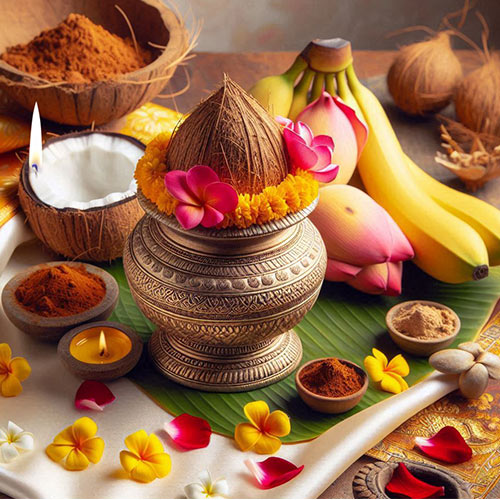
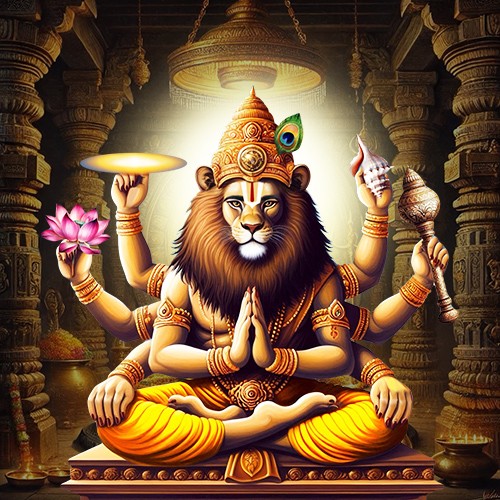
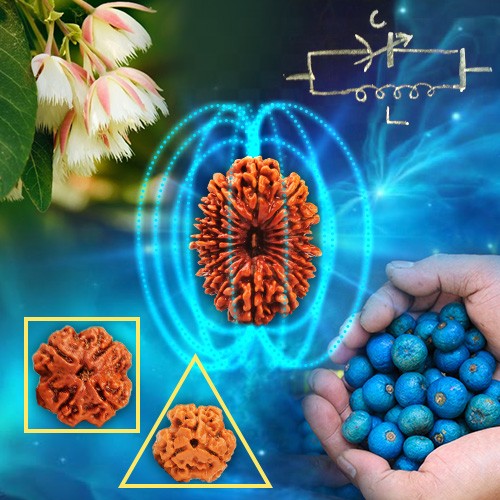
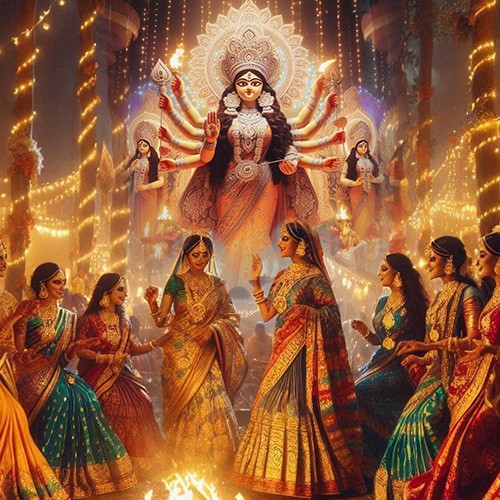


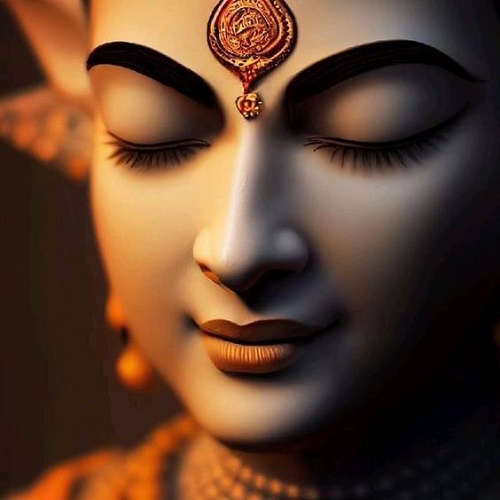
.jpg)
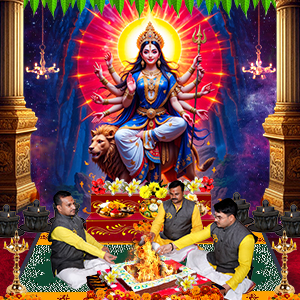
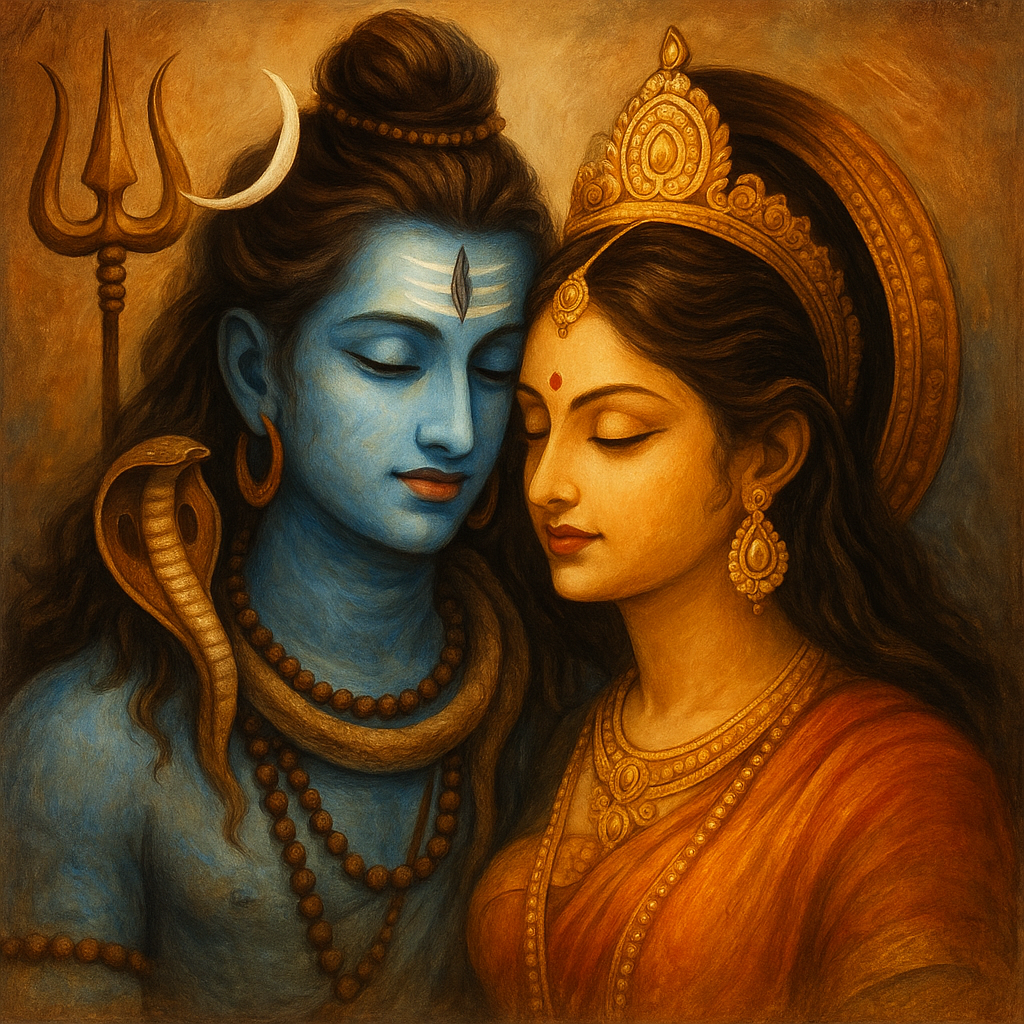
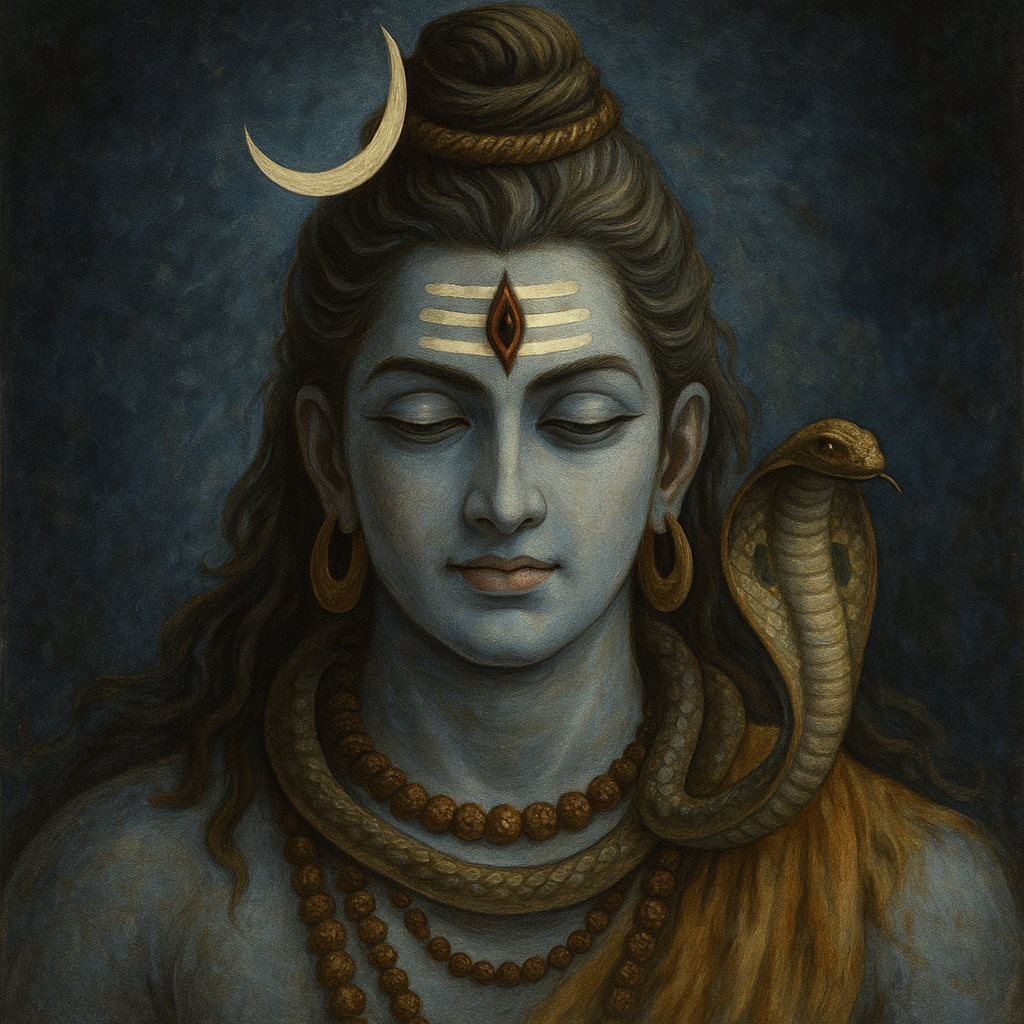
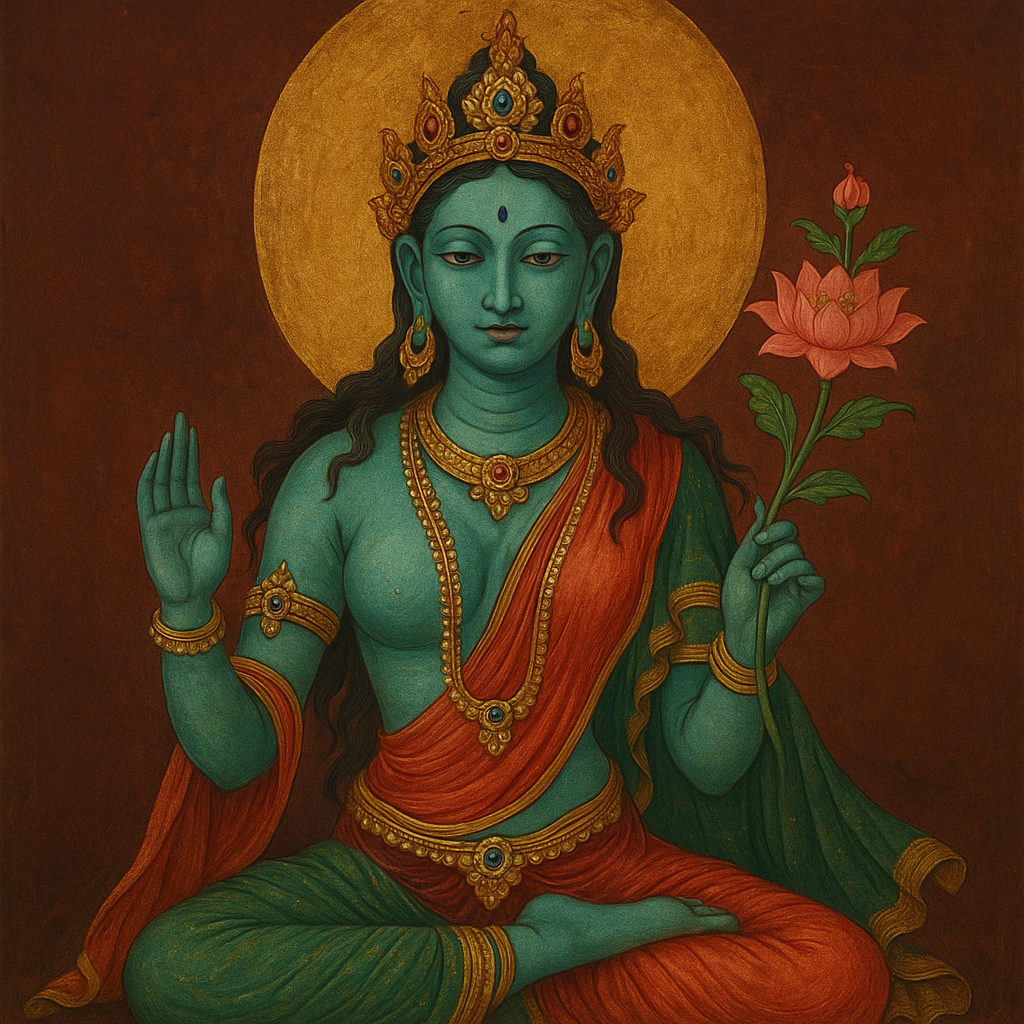
Comments 0
Leave your thought here